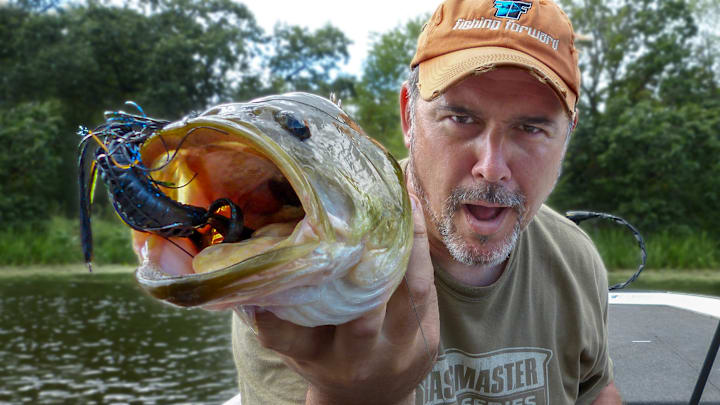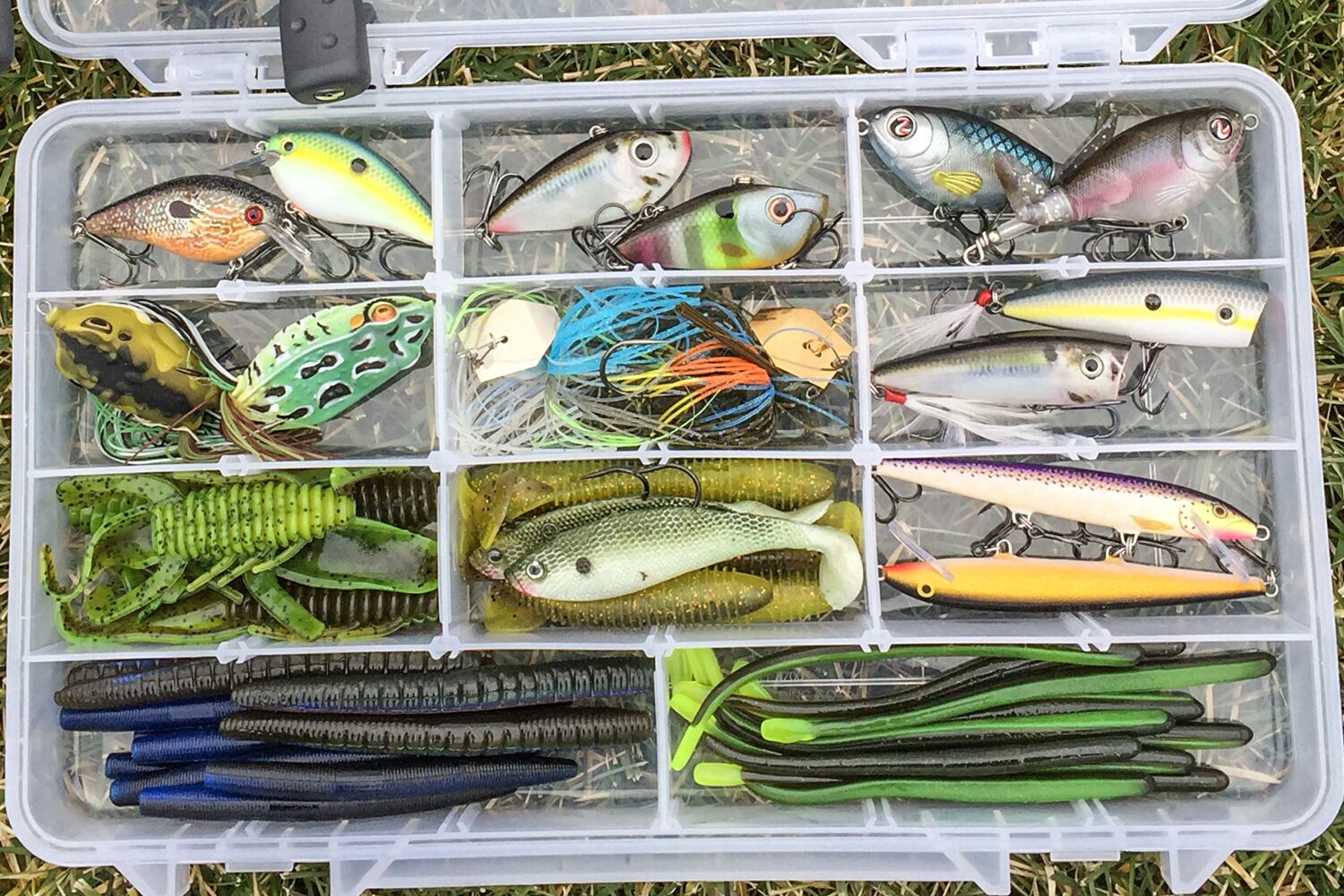Top 10 Bass Lures That Mimic Natural Prey Perfectly
Check out the Secrets Behind Reliable Bass Lures to Improve Your Fishing Experience
Understanding the intricacies of bass Lures can significantly affect angling success. Different Lures serve unique functions, from crankbaits made for broad coverage to jigs that target particular frameworks. The performance of these Lures typically depends upon aspects such as shade, movement, and seasonal patterns. By grasping these aspects, anglers can open a more satisfying experience. Yet, the question continues to be: which approaches will generate the most effective outcomes on the water?
Comprehending Bass Habits and Habitat
Comprehending the actions and environment of bass is important for fishermens looking for success on the water. Bass are functional fish discovered in different freshwater environments, including rivers, fish ponds, and lakes. They often tend to like areas with structure, such as immersed rocks, fallen trees, and aquatic plants, which provide shelter and hunting grounds.
Seasonal patterns dramatically influence their habits; in warmer months, bass commonly inhabit superficial waters, while they pull back to deeper areas during chillier seasons. Best Bass Lures. Their feeding behaviors are opportunistic, with a diet consisting mainly of smaller fish, bugs, and crustaceans
Time of day additionally plays a role; bass are a lot more active during late evenings and early mornings. Weather problems can affect their habits as well, as cloudy days might encourage superficial feeding, whereas bright sunshine often drives them to seek cover. Recognizing these patterns equips anglers with the knowledge required for reliable angling strategies.
Kinds Of Bass Lures and Their Uses
A selection of bass Lures are vital tools for fishermens intending to attract this prominent game fish. These Lures can be categorized right into numerous kinds, each offering distinct purposes. Crankbaits, created to resemble the swimming action of baitfish, work for covering big areas swiftly. Spinnerbaits, including revolving blades, produce resonances and flashes that can tempt bass hiding in cover. Jigs, with their heavy heads and weedless style, are optimal for bottom fishing, enabling anglers to present bait near frameworks where bass typically lurk. Soft plastics, such as worms and animal lures, use flexibility and can be rigged in several ways to adjust to varying problems. Topwater attractions, like frogs and poppers, are best utilized throughout low-light hours when bass are proactively eating the surface. Each kind of lure plays a crucial duty in enhancing angling experiences and enhancing the chance of effective catches.

Design and color: What Attracts Bass?
What variables influence bass attraction to details lure shades and styles? The interplay of light, water clarity, and the native environment plays a vital function. Brilliant shades, such as chartreuse and orange, can catch a bass's eye in dirty waters, while more restrained tones like eco-friendlies and blues might master clear conditions.
Layout elements, consisting of form and motion, also considerably impact bass destination. Lures that simulate natural target, such as baitfish or crawfish, are especially efficient. Furthermore, the presence of realistic information, like fins or ranges, improves the lifelike look, more enticing bass.
Psychological factors, such as a bass's feeding behaviors and territorial reactions, have to not be neglected. In certain situations, bold styles can provoke a response from aggressive bass, while refined variations can attract a lot more careful fish. Ultimately, comprehending color and design subtleties is necessary for enhancing lure effectiveness.
Matching Lures to Water Issues
Selecting the best attraction involves more than simply design and color; water problems play a significant duty in identifying one of the most reliable choices. Elements such as water temperature, depth, and clearness straight influence bass behavior and their feeding patterns. In clear water, subtle presentations and natural shades tend to be much more efficient, while dirty problems might ask for brighter, extra vibrant Lures that can draw in interest.
Temperature level likewise impacts bass activity; throughout warmer months, faster-moving Lures can elicit strikes, whereas cooler temperatures may require slower, much more calculated discussions. Additionally, deeper waters frequently require much heavier Lures that can get to the preferred depth, while superficial areas are much better fit for lighter, surface-oriented options.
Strategies for Efficient Entice Presentation
Grasping the methods for efficient lure presentation can considerably boost fishing success. Anglers should focus on the rate and rhythm of their retrieves, adapting them to imitate the all-natural activity of victim. A consistent recover works well for lots of lures, but including pauses can cause strikes from extra careful fish. Additionally, varying the deepness of the attraction is critical; using various spreading angles and changing the reel can aid target fish at various depths.
Utilizing a combination of skill discussions, such as twitching or dragging the lure throughout all-time low, can likewise be reliable. It is crucial for fishermens to read the water and readjust their methods based on presence and structure. Moreover, offering Lures near cover, like immersed rocks or greenery, often generates much better results, as bass tend to seek sanctuary. Inevitably, experimenting with different strategies will certainly lead to an extra fulfilling angling experience.
Seasonal Factors To Consider for Tempt Choice
Seasonal changes considerably affect bass habits and lure performance. As water temperature levels vary, fishermens should adjust their lure selections to straighten with pre-spawning and post-spawn problems. Comprehending these seasonal patterns can boost fishing success by targeting bass at their most energetic times.
Seasonal Water Temperature Level Effects
As water temperatures rise and fall throughout the year, bass behavior and feeding patterns alter, affecting the effectiveness of different lures. During chillier months, bass tend to become navigate to this site tired, favoring slow-moving Lures that imitate battling target. In contrast, as temperatures rise in spring, bass become a lot more energetic, making faster, much more aggressive Lures effective. Mid-summer sees bass seeking much deeper, cooler waters, demanding making use of Lures that can reach these depths. As temperature levels start to decrease in autumn, bass typically feed heavily in prep work for winter season, making versatile Lures that can imitate a variety of forage types particularly successful. Comprehending these seasonal temperature results enables anglers to pick proper Lures that straighten with bass actions, optimizing their fishing success.
Pre-Spawning Draw Choices
What variables influence the option of Lures during the pre-spawning period for bass? Anglers have to think about water temperature, weather, and the bass's feeding behavior. As temperatures climb and days extend, bass end up being more aggressive and active, motivating a shift in their feeding patterns. During this time, tempts that resemble the all-natural prey of bass-- such as shad or bluegill-- are particularly reliable. Popular selections consist of spinnerbaits, click to read more lipless crankbaits, and jigs, which can be fished at various midsts. In addition, anglers should concentrate on locations with cover, such as submerged vegetation or rough frameworks, as these spots typically attract pre-spawn bass. Bass Fishing Lures. Understanding these factors can considerably enhance the chances of an effective angling journey throughout this essential seasonal phase
Post-Spawn Techniques Adjustments
Although post-spawn bass display different actions than throughout the pre-spawn stage, efficient lure option stays essential for fishermens aiming to target them effectively. After spawning, bass often come to be lethargic and look for deeper waters, making it important to readjust lure choices as necessary. Fishermens ought to think about utilizing slower-moving lures, such as jigs or soft plastics, which can entice bass that are less hostile. Crankbaits with a refined action can also work, allowing for a slower discussion that resembles the natural post-spawn forage. Furthermore, angling near structure, such as submerged plant life or rocks, can enhance opportunities of success. By understanding these seasonal changes, anglers can enhance their fishing experience and improve their catch rates during the post-spawn duration.
Regularly Asked Questions
How Do I Select the Right Pole for Bass Fishing?
To pick the appropriate rod for bass angling, one ought to take into consideration the rod's power, action, and length. A tool to medium-heavy pole, around 6 to 7 feet, is commonly ideal for versatility and control.

What Is the most effective Time of Day to Capture Bass?
The ideal time of day to catch bass is generally morning and late mid-day. Throughout these durations, bass are much more active, feeding near the surface, making them less complicated targets for fishermens using efficient appeals.
How Do Climate Condition Impact Bass Angling Success?
Weather condition problems significantly influence bass angling success. Warmer temperature levels and cloudy skies commonly urge bass task, while cold snaps can cause sleepiness. Rain can likewise boost feeding habits, making it important for anglers to adapt their techniques appropriately.
Can I Use Lures for Various Other Fish Variety?
Yes, tempts made for bass can additionally work for other fish species. Picking the proper dimension, shade, and action according to the target species and their feeding habits continues to be crucial for success.
What Prevail Blunders When Utilizing Bass Lures?
Typical mistakes when making use of bass Lures consist of choosing unacceptable dimensions or colors, getting as well swiftly, stopping working to adjust to weather problems, and ruling out water deepness. These errors can considerably reduce the opportunities of a successful catch.
As water temperature levels rise and fall throughout the year, bass habits and feeding patterns change, affecting the effectiveness of different attractions. Mid-summer sees bass looking for deeper, additional hints cooler waters, demanding the use of Lures that can get to these midsts. Post-spawn bass exhibit various habits than throughout the pre-spawn phase, effective appeal choice remains crucial for fishermens aiming to target them successfully. After generating, bass usually end up being sluggish and seek much deeper waters, making it crucial to readjust lure choices accordingly. Common errors when utilizing bass Lures consist of picking unsuitable sizes or shades, getting too quickly, stopping working to adjust to weather conditions, and not taking into consideration water deepness.